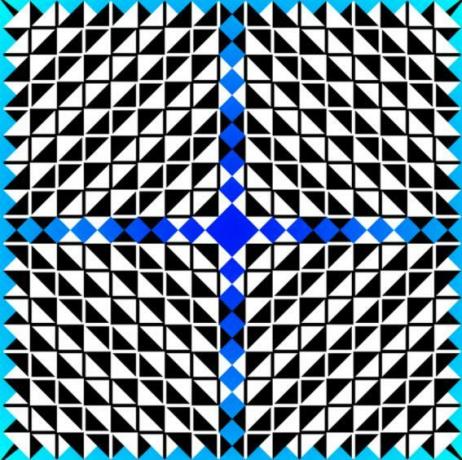
Methods, designs and techniques Psychology uses the Scientific Method developing a set of particular methods (observational method, selective method and experimental method) Method. General plan of action to carry out a specific action. It specifies the regulations to follow. It refers to the entire research process, adopting a certain general strategy that conditions the development possibilities of each of its stages, in the implicit need for coherence internal.
It constitutes the specific modes or procedures to carry out different particular stages, which as devices Auxiliaries make it possible to apply the methods.
Design.
Specific strategy that is used to carry out an action. Work plan that specifies the procedures to be followed or that the researcher has followed to obtain data that allow testing a research hypothesis. Choice and specification of the procedure for obtaining data that allow testing hypotheses.
It is a structured plan of action that, based on some basic objectives, is aimed at obtaining information or data relevant to the problems raised. Designs include in their expression a series of procedural decision specifications. Reference can be made to the method (Observational design), to the way of obtaining measurements (Intersubject designs), to the way of organizing groups (Random group design), etc.
Experimental Method Experimental Method. Research strategy that aims to establish causal relationships between the independent and dependent variables. Through direct manipulation of the study variables Maximum internal control. Control over the potentially contaminating variables of the results. Maximum intervention of the researcher. Direct action of the researcher on the conditions of appearance of the phenomenon under study.
Experimental group comparison designs: Univariate or multivariate strategy. Univariate or univariate design. If the V. Dependent (variable in which the effect of V. I.) is unique. Multivariate or multivariate design. Several V. Dependents (The influence or effect of V. I.) Simple (univariate) or factorial strategy. Unifactorial or simple design. Only one V. Independent, which will be operationalized in a certain number of values or levels, which in turn generate the same number of experimental conditions or treatments to be applied to the study subjects. In its simplest form it includes only two different experimental conditions, one incorporating the presence or performance of the independent variable and another with the absence of the same that acts as control.
Factorial Design.
Two or more V. Independent These designs provide information not only on the specific effects of each of the V. Manipulated, but of their possible combined or interaction effect. They can test complex hypotheses that assume that the effect of one of the factors may be affected by the various values of the other factors in the study. Intersubject or intrasubject strategy Intersubject Design. Subject different groups of subjects to different experimental conditions, in order to compare their measurements in V. Dependent, and thus assess the effect of V. Independent. It is based on the assumption that these groups are initially equivalent (before applying the conditions experimental), so that their differences after the treatments can be unequivocally attributed to the V. Independent. The basic strategy to achieve this initial equivalence of the groups is randomization.
Intrasubject Design.
Each subject acts as a control or reference for himself, in such a way that each of the subjects provides a series of records or observations that correspond to the different levels of V. Independent. That is, the successive application of all the experimental conditions to the same group of subjects provides us with a series of measures that come from the same source and whose differences could be attributed to the different levels of the V. Independent. But this serial application of all the treatments to each subject can generate polluting effects that distort the effect of V. Independent and that must be controlled. Its use is not suitable when: a) The persistence effect is different depending on the order of the IV levels.
It is impossible to make reversible the value of the IV. of each subject. Complete or restricted randomization strategy. It constitutes the specific modes or procedures to carry out different particular steps, which, as auxiliary devices, make it possible to apply the methods. Complete randomization design. When the assignment of the subjects to the experimental conditions has been done randomly. The data source is always a representative sample (the group of subjects, as a whole, presents characteristics that correspond to those of the population to which they belong). It is a strategy that relies on the intersubject variability of the data of each group and on summary values of the same as the means and the standard deviation, for the analysis of the data and the interpretation of the results. Restricted or block design. Some blocking technique is used when assigning subjects to groups. Another strategy is the controlled study of individual subjects.
Single-case or within-subject replication designs. We can have a component of interruption as a consequence of the application of the treatment. They evaluate the change produced by the application of an intervention or treatment. Basic aspects that characterize this type of design are: The temporal or longitudinal component involved in the broad series of data or measurements of the subject, which support the inferences of change or effect. The interruption that the application of the treatment creates in that series, and that will provide the elements of comparison to assess its effect. Characteristics: Successive recording over time of the behaviors of a single case or a group small before, during and in some cases, after withdrawal of treatment, in very controlled. We did not choose the subject by chance, and we only chose one 2.4 Quasi-experimental designs Aims to promote the study of problems of social and professional relevance that cannot be transferred to the laboratory but can be studied with a procedure checked. Share with the experimental design.
Existence of a specific intervention (V. Independent or treatment) whose effects on another variable of interest we want to know. Differences with the experimental design. Study groups cannot be organized by random assignment. It is not possible to count on the supposed initial equivalence of the groups, rather, groups are used non-equivalent, which may differ from each other in more respects than those directly related to the V. I. The analysis and interpretation of the data must be carried out with prudence with regard to the inferences of causal relationships and sometimes even should include the task of separating through statistical analyzes the effects of the treatment from the effects of the previous differences between the two groups. 3. Selective, correlational, psychometric or survey method Selective method. Scientific research strategy in which the study variables are not manipulated directly but through the selection of study subjects. The VI is already given to us, we choose the subjects.
It is the study of phenomena, without the manipulative intervention of the researcher, from a selection (subjects or observation) depending on whether they have among their characteristics a certain value or modality of the study variables, for the study of the relationship between them or with the specific manifestation of other The relevant variables for the study are NOT intentional manipulation but value selection, by their very nature, hence the name of selective method. Eg Study on brain injuries. It is necessary to choose subjects that already suffer some type of injury before carrying out the study. Survey designs. Specific strategy -by sampling- of application of the general procedure of the selective method.
Priority to expansive aspects of the representability and breadth of study versus intensive objectives. Eg To know the opinion before the elections, the opinion of a country, etc. Characteristic of survey studies: The objectives are more expansive and descriptive. To carry out a survey I do not need to start from a theoretical model from which some hypotheses to be tested have emanated (although it may happen that this is the case), it is enough to have a need for descriptive information and a procedural rigor that focuses primarily on the representativeness of the sample, although once that I have the data, I can try to analyze possible contingencies or relationships between variables The temporal criterion: longitudinal and transversal Ex post designs fact. Explanation of the phenomenon in terms of functional and even causal relationships.
They have different structures depending on their retrospective (past tense) and prospective (future) nature, from the organization of groups (simple, complex, or single group) and the different possibilities of handling the variable weather. Eg Study facts of the past, which is already done. Characteristic of ex-post facto: More explanatory or predictive objective, within its limitations. In which I work with natural groups (eg diagnostic groups), the study is usually oriented to the search for specific relationships of variables that help to understand the disorder or to predict possible consequences (greater explanatory intention), and the theoretical substrate of these studies is usually more powerful and woven than that which may be behind a survey. All this said with caution since the possible complementarity of the methods means that for the same objective, it may be useful for us to go through the path of research in successive steps that lead us to leaning on different methodologies. The possible location in the continuum of internal control, one point beyond one another, would not be explained by the greater naturalness of the survey but by the greater complexity of the previous theoretical model and therefore of the internal structure of the study of relations of variables of the ex-post-facto design compared to the survey. Disadvantages of these designs is: They do not allow to control possible VVEE that may intervene by contaminating the measures. It does not offer guarantees for the verification. Advantages of these designs: The management of the investigation of the time variable and the application of complex analyzes such as models structural equations allows in selective research an approach to the study of the relationships between variables from theoretical causal models, which take into account the multiplicity of possible interactions between the relevant variables of a trouble.
Observational method Observational method. Study of spontaneous behavior in a natural situation reconciling the level of systematization and rigor to provide scientific knowledge with the protection of the maximum degree of realism. Important in Evolutionary Psychology. Global procedure for investigating spontaneous behavior based on data collection, without restrictions from the researcher, guaranteeing the replicability of its results through the systematic application of "ad hoc" coding systems that enable the record. Absence or minimal presence of intervention, maximum degree of naturalness. Minimal internal control. Maximum realism. The internal structure of observational studies can refer to criteria as general as: Objective (exploratory vs confirmatory) Inclusion of the time variable or the type of measures used (macroanalysis vs microanalysis) Other specifics of procedural aspects observational. Convenient: Allows understanding of its function (understanding the "why" or "why" of behavior) Observational designs
Multi-method The validity of an investigation will depend more on the adequacy of the chosen methodology and the correct and rigorous performance of the study, that of the choice of a method that in theoretical terms is more powerful than or


